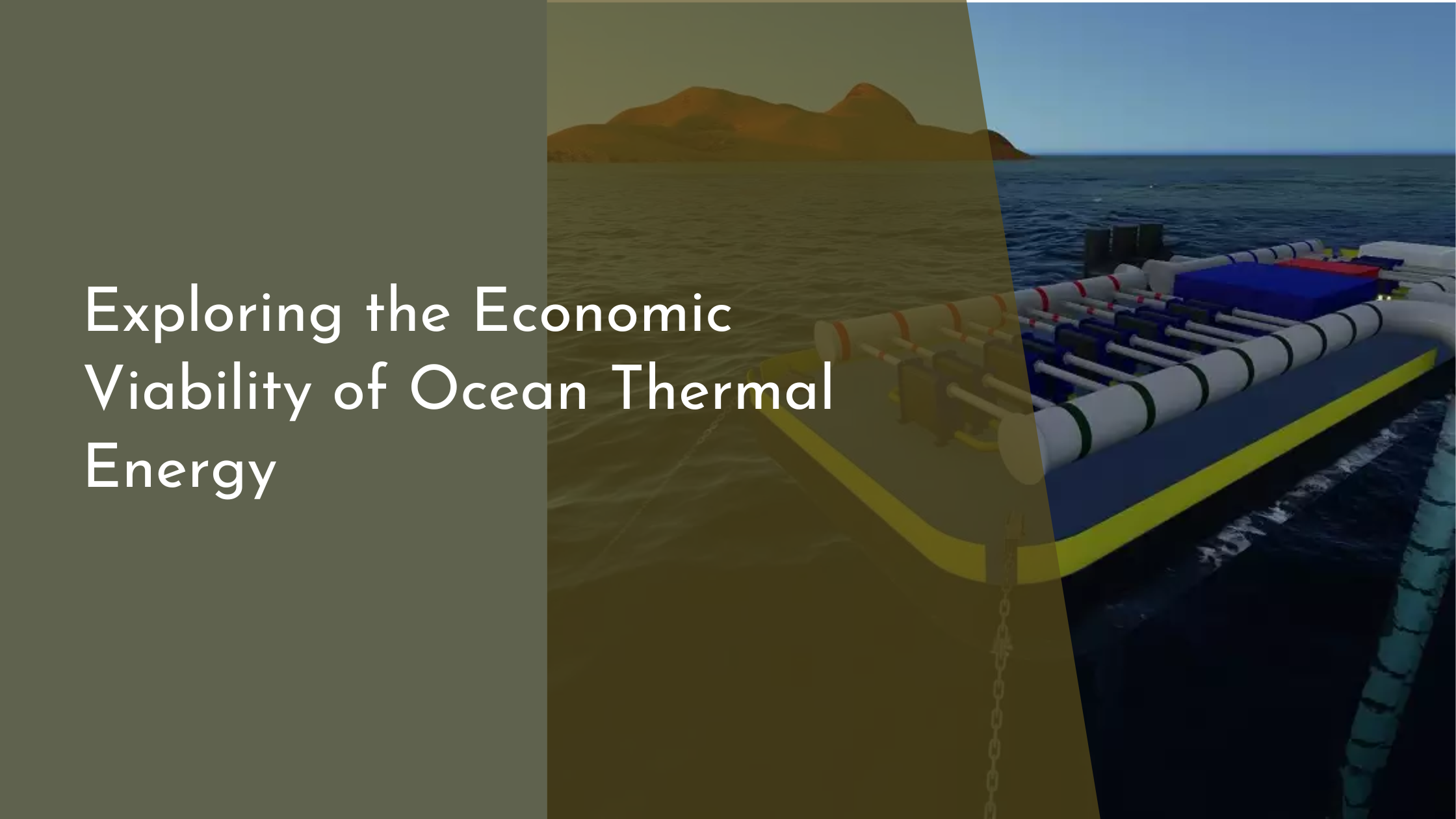Exploring the Economic Viability of Ocean Thermal Energy
Ocean Thermal Energy Conversion (OTEC) is a fascinating renewable energy technology that harnesses the natural temperature differences in ocean waters to generate electricity. As the world increasingly seeks sustainable energy solutions, understanding the economic viability of OTEC becomes crucial. This article delves into the basics of ocean thermal energy, examines the latest technological advances, evaluates the economic landscape of this energy form, and discusses how it can contribute to a sustainable future.
Understanding Ocean Thermal Energy Basics
Ocean thermal energy is derived from the temperature difference between warmer surface water and cooler deep water in the ocean. This temperature gradient can be converted into electricity using a process known as Ocean Thermal Energy Conversion (OTEC). OTEC systems typically use a working fluid with a low boiling point, such as ammonia, which is vaporized by warm surface water to drive a turbine connected to a generator, producing electricity. The vapor is then condensed back into a liquid using the colder deep ocean water, completing the cycle.
The concept of utilizing ocean thermal energy is not new; it dates back to the late 19th century when it was first proposed by Jacques-Arsène d’Arsonval. However, technological and economic challenges have historically hindered its widespread adoption. Today, with advancements in technology and a growing emphasis on renewable energy sources, OTEC is gaining renewed interest. The vast energy potential of ocean thermal gradients, particularly in tropical regions where the temperature difference is most pronounced, presents an opportunity to harness a continuous and reliable source of clean energy.
Assessing Current Technological Advances
Recent technological developments have significantly improved the prospects of OTEC as a viable energy source. Innovations in heat exchanger design, which are crucial for efficient energy transfer, have led to increased thermal efficiency and reduced costs. Advances in materials science have also played a role, with the development of corrosion-resistant materials extending the lifespan of OTEC components in the harsh marine environment.
Another critical advancement is the optimization of closed-cycle and open-cycle OTEC systems. Closed-cycle systems, which use a working fluid in a continuous loop, have benefited from improved turbine design and heat recovery systems. Open-cycle systems, on the other hand, directly utilize seawater as the working fluid and have seen enhancements in turbine efficiency and desalination capabilities. These technological strides not only improve the efficiency and cost-effectiveness of OTEC plants but also enhance their potential to supply fresh water as a byproduct, adding to their economic appeal.
Evaluating Economic Benefits and Challenges
The economic benefits of OTEC are numerous, beginning with its potential to provide a stable and continuous source of electricity, particularly in tropical island nations where energy can be scarce and expensive. Additionally, OTEC plants can contribute to local economies by creating jobs in construction, operation, and maintenance, as well as in associated industries such as desalination and aquaculture.
However, several challenges remain. The initial capital costs of constructing OTEC facilities are high due to the complexity of the technology and the need for durable materials. Furthermore, the efficiency of OTEC systems is relatively low compared to other renewable energy sources, meaning that large-scale deployment is necessary to achieve significant energy outputs. Despite these challenges, the long-term benefits, including energy security and reduced reliance on fossil fuels, make OTEC an appealing investment for forward-thinking energy policies.
Encouraging Sustainable Energy Solutions
Promoting ocean thermal energy as part of a broader renewable energy strategy can have significant environmental and economic benefits. By diversifying the energy mix with OTEC, countries can reduce their carbon footprints and lessen the environmental impact of fossil fuel consumption. Additionally, the integration of OTEC with other renewable energy sources, such as wind and solar, can enhance grid stability and reliability.
Encouraging public and private investment in OTEC research and development is essential to overcoming the current economic and technological barriers. Government incentives, international collaborations, and public awareness campaigns can all play a role in accelerating the adoption of OTEC. By prioritizing sustainable energy solutions, we can pave the way for a cleaner, more resilient energy future that taps into the vast and largely untapped potential of our oceans.
As we look towards a sustainable energy future, ocean thermal energy presents a promising opportunity to harness the power of our oceans for clean electricity generation. While challenges remain, technological advancements and economic incentives can help unlock its potential. By investing in research and promoting the adoption of OTEC, we can contribute to a diversified and sustainable energy landscape that benefits both the economy and the environment.

